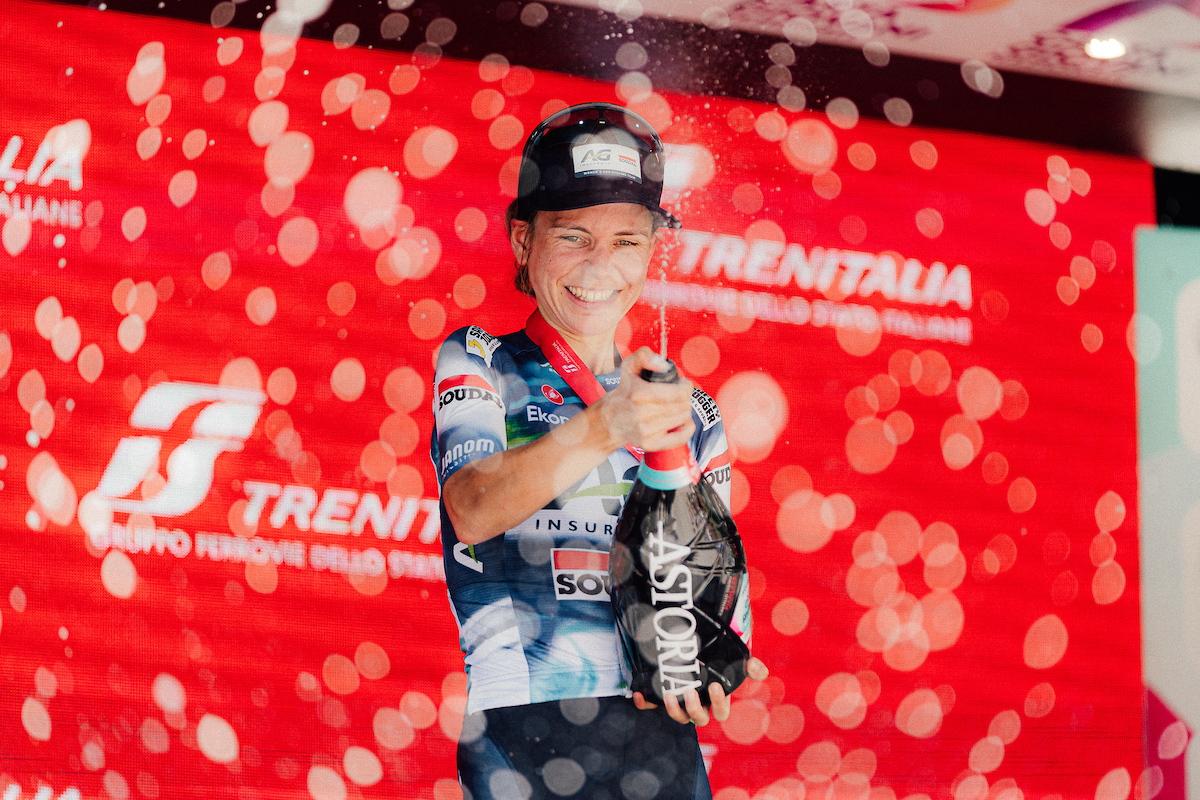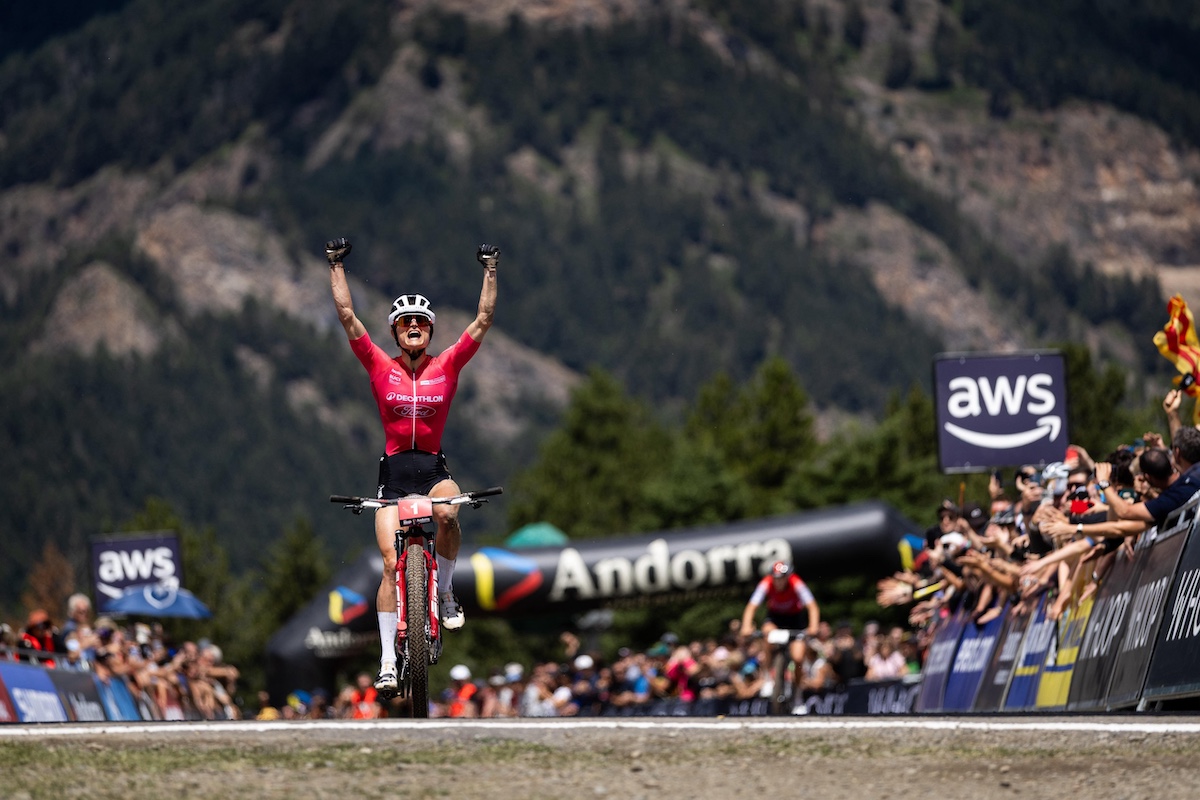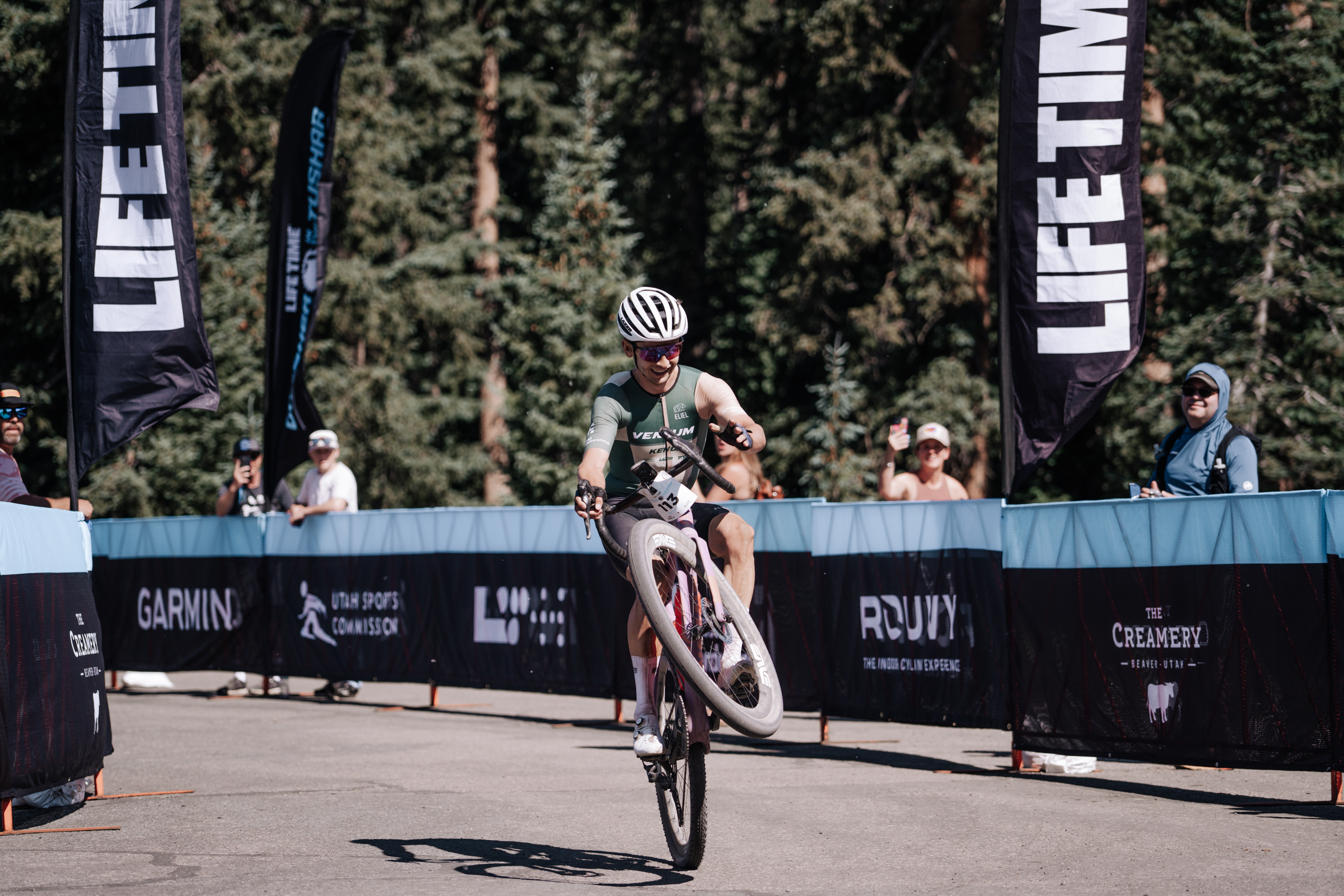Vuelta a España 2022 stage 12 preview - View of road ahead to unfold on Penas Blancas
Long finishing climb on Thursday's 192.7km stage to act as a form guide for weekend’s full-scale mountain battles
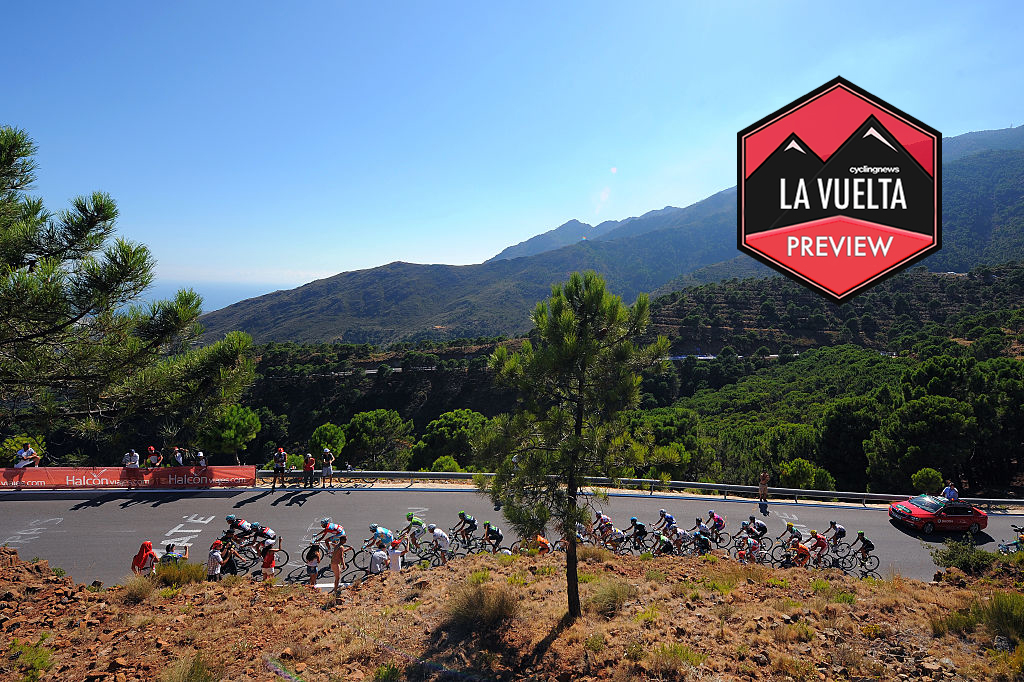
Stage 12: Salobreña - Peñas Blancas. Estepona
Date: Thursday, September 1, 2022
Distance: 192.7km
Stage timing: 12:25-17:30 CET
Stage type: Mountain
According to local riders, one thing is guaranteed to strike you when you climb Penas Blancas, the main ascent of stage 12 in the Vuelta a España, for the first time. It’s not its considerable length or the painfully difficult early gradients as you ease away from the Mediterranean coastline inland and upward, nor the horrendous destruction wreaked by a series of forest fires last year on each side of the steadily rising road. Given this is the top of a mountain that towers over the coastline below, what takes your breath away is the view.
“It’s simply amazing,” Luis Ángel Maté, the professional with Euskaltel-Euskadi from nearby Marbella who has ascended Penas Blancas "loads of times", told Cyclingnews. “You can see Africa, Sierra Nevada, the Sierras de Ronda: loads of different places, all from the one lookout point."
Maté’s campaign to help replant trees destroyed in the forest fires on Penas Blancas via breakaways in the Vuelta, is still ongoing until September 11th in Madrid at least. But when the Vuelta tackles Penas Blancas, as the only classified ascent of the day, the climb will define the entire stage.
“It’s basically flat or only with slight climbs on the run-in beforehand,” Maté said, “so if something big happens, by rights it will happen there on Penas Blancas.”
“In some ways, that's a pity. Because it gets me that they didn’t want to include so many of the other great climbs around on the same day. Penas Blancas has three roads up it, for one thing, or they could have gone into the Sierra de Ronda and done a 5,000 metre climbing stage.”
“But I guess you can’t have every stage like that, and they didn’t want to overdo things. We’ll have the big day out here another year.”
The upshot is that what is a fairly long stage, at 192.7 kilometres – and with some risk of coastal cross winds – along the Mediterranean will likely boil down to the final hour tackling Penas Blancas. But riders like VIncenzo Nibali, present when it was last used in 2013, with a win for Leopold Konig and a leader’s jersey for Nicolas Roche, may be surprised when they do so.
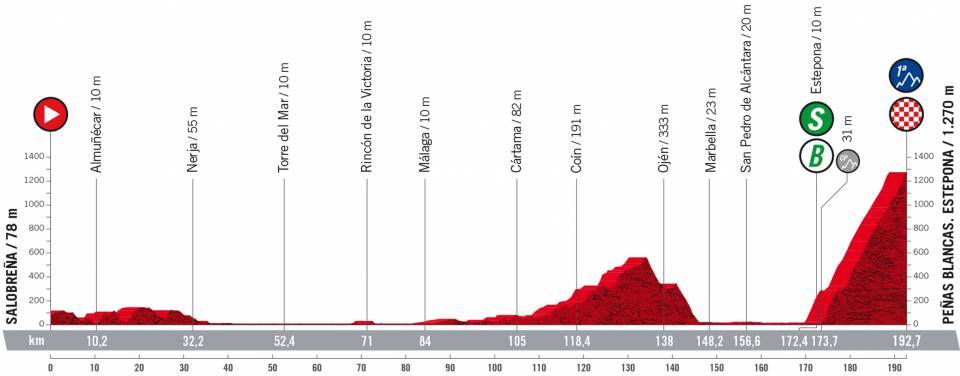
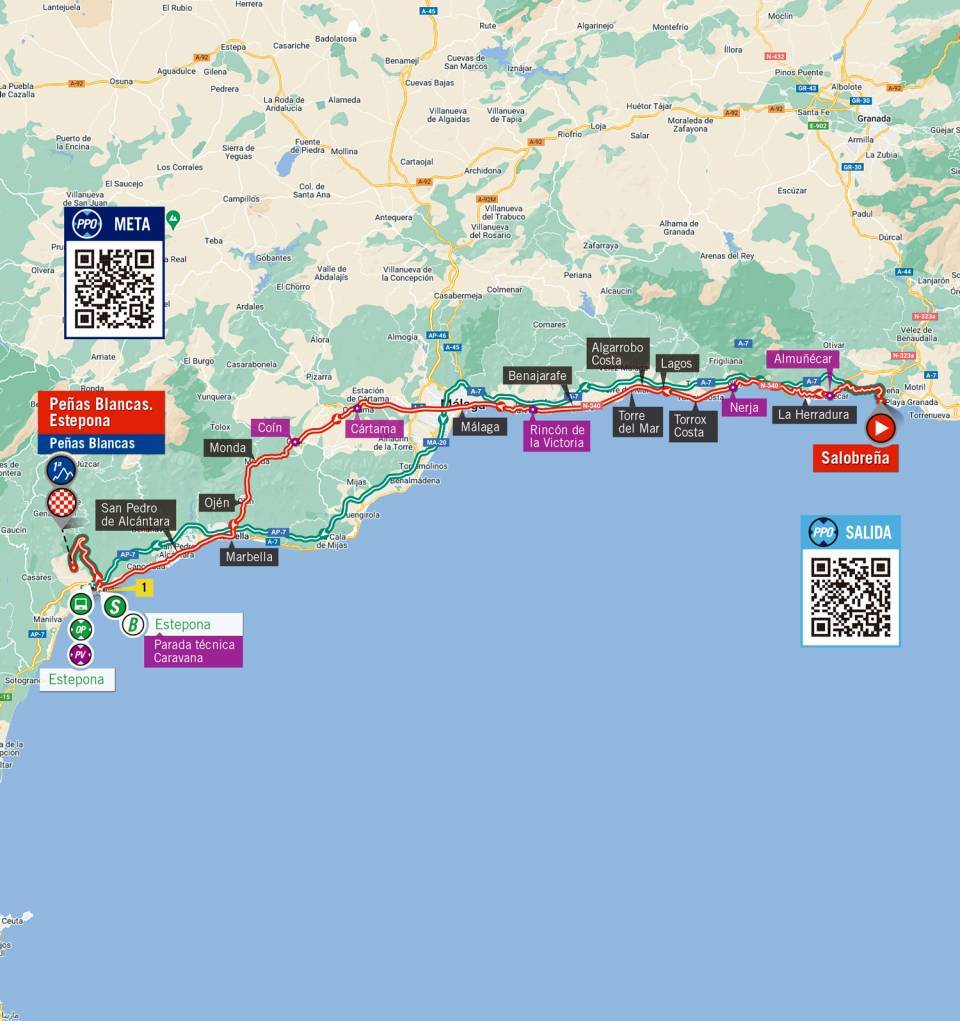
That's because this time round it has been extended beyond the climb of nine years ago by nearly five kilometres. And all in all, as Maté points out, at 20 kilometres long and with around 50 minutes of climbing time, a lot could happen on a climb so tough as Penas Blancas.
“You start at sea level and you go all the way to 1,400 metres and the steepest ramps are right at the bottom,” he adds.
“The second segment is more stable, mostly at around 7 per cent, but then the final, new part up to Los Reales, running at averages of between eight and ten per cent, is really difficult”
“It’s the hardest part: you’ve been riding for quite some time, the roads change and get a lot narrower, and above all, that’s where the toughest parts of the climb are.”
“It could have been even harder, but they resurfaced it all a couple of weeks ago. Yet it’s the longest climb of the Vuelta after Sierra Nevada, and that’s what really matters.”
As a testing ground for the fast approaching weekend of Andalucian climbing in La Pandera and Sierra Nevada, Penas Blancas cannot be faulted. Both with the sheer length and the heat – with the weather likely to be in the high thirties along the coast just as it will be inland – Penas Blancas will be a trial not only for the GC leaders, but their teams as well.
Still, the Sierra de Bermejo – which means the red sierra – has some other features that set it apart and one is geological.
“It’s also placed with the biggest surface area of a rock formation called Peridotite in the world,” says Maté. “It’s a kind of rock that very rarely reaches the surface of the earth, and it’s very toxic. But the vegetation in the area,” a kind of pine tree called pinsapo in Spanish, “seemed to thrive on it. The shame is that the forest first of last year destroyed so much that a lot of the vegetation has gone and for part of the climb all you can see are burned-out trees.”
How burned out the riders are, too, by such a long, arduous ascent after 12 days of hard racing remains to be seen. The opportunity for racers like leader Remco Evenepoel (Alpha Vinyl-Quick Step) and Primož Roglič (Jumbo-Visma) is there without a shadow of a doubt. As Maté said simply “with or without the previous climbs, it’s going to be hard.”
Whether Evenepoel will be in any mood to enjoy the view from the top, in any sense of the word, we'll find out some time late on Thursday afternoon.
The latest race content, interviews, features, reviews and expert buying guides, direct to your inbox!
Cyclingnews is the world's leader in English-language coverage of professional cycling. Started in 1995 by University of Newcastle professor Bill Mitchell, the site was one of the first to provide breaking news and results over the internet in English. The site was purchased by Knapp Communications in 1999, and owner Gerard Knapp built it into the definitive voice of pro cycling. Since then, major publishing house Future PLC has owned the site and expanded it to include top features, news, results, photos and tech reporting. The site continues to be the most comprehensive and authoritative English voice in professional cycling.
Latest on Cyclingnews
-
Tour de France 2025: All the yellow cards, fines, and penalties
Milan gets fine after win on stage 8, all quiet on stage 9 -
'Beyond my wildest dreams' – Sarah Gigante’s rocky road to dual stage wins and overall podium spot at Giro d’Italia Women
Update with stage 7 victory and GC third for Australian which carves out perfect comeback from iliac artery endofibrosis surgery -
'I'm a fighter' – Two crashes and a puncture not enough to stop Samara Maxwell riding to MTB World Cup victory at Pal Arinsal
Rider from New Zealand climbs back to XCO top step after fighting back to front and then launching a last lap attack -
Sarah Sturm and Zach Calton plunder Utah gravel for solo wins at Crusher in the Tushar
Emma Langley and Torbjørn Røed ride to runner-up positions as race returns from year off due to wild fires in area

